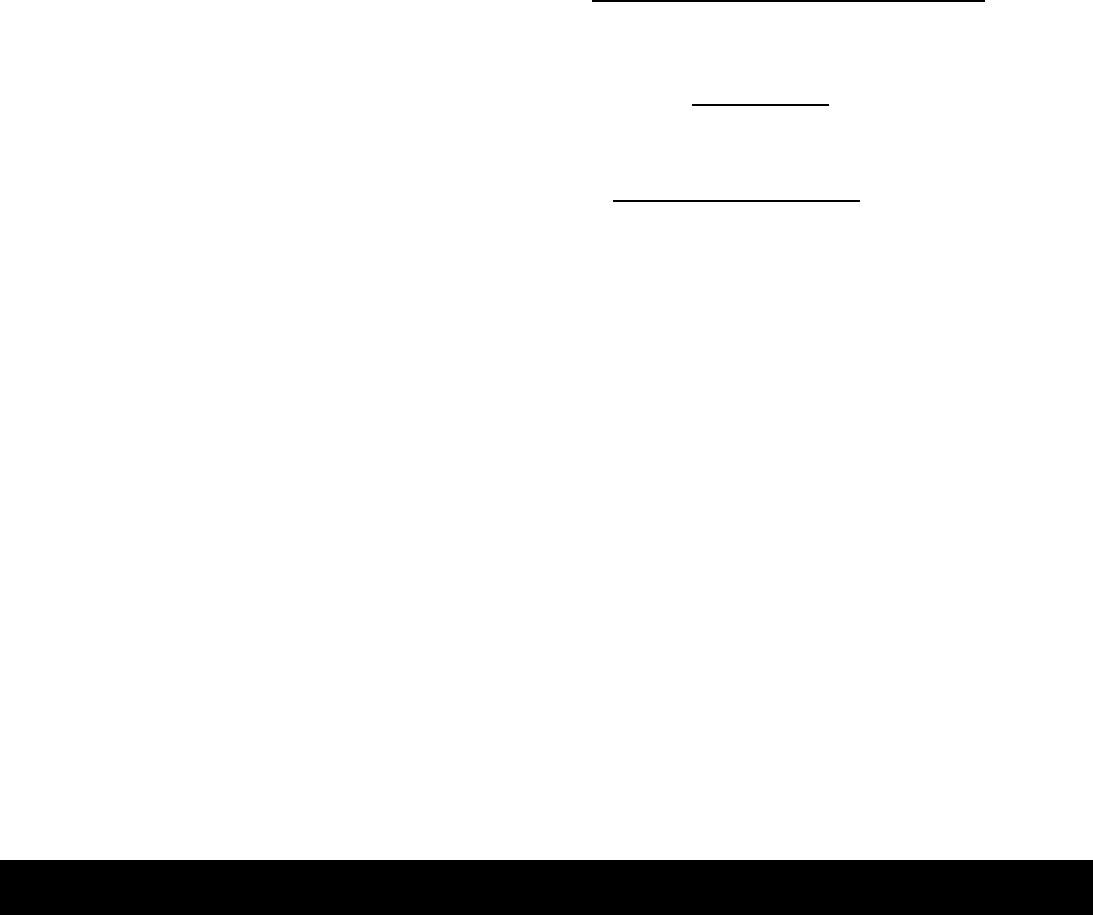
2
and help control oil drainage. Additionally, the input
shaft must be parallel to the crankshaft. The compres-
sor housing may be loosened and rotated virtually
360° for optimum outlet alignment.
2. The supercharger mounting holes are 3/8-16 x 7/8"
deep. The tensioner plate holes are metric: M12-1.75
x 3/4" deep. It is imperative that the tensioner plate
pivot bolt in the center of the gearcase cover not be
allowed to bottom out.
3. Mounting brackets should be rigid, utilizing five of the
six supercharger mounting holes. Construction should
not allow the bracket to resonate in a critical range
(this may depend on engine configuration), nor should
the bracket offer any significant flex. Mounting plates
should be at least .250" in thickness. For racing appli-
cations, we recommend a minimum thickness of .312".
4. An oil feed and drain must be provided. Filtered oil
from the engine must not be contaminated by Teflon
tape or other sealant that might plug the oil feed fitting
in the supercharger. Vortech offers a supercharger
oil filter kit for most installations.
5. Return oil to the oil pan using 1/2" I.D. hose (or larger)
or -8 AN fitting (or larger) routed gradually downward
with no dips, allowing the oil to enter the oil pan above
the oil level. This is a gravity drain system. On appli-
cations such as endurance and/or road racing engines
or for high speed sustained supercharger operation
applications such as a freestanding engine, the use
of two supercharger oil drains are required to evacuate
the engine oil from the supercharger. An alternate
method would be to use one drain hose off the super-
charger and a vent hose attached to one of the other
drain fittings off the bottom of the supercharger. Drain
restrictions, kinks or returning the oil below the oil level
in the pan may cause a severe windage problem that
consumes significant power and generates heat. Super-
charger seal failures may also result.
6. The oil feed fitting must remain in the original position
on the supercharger gearcase as when it was shipped
from Vortech. The oil entering the supercharger
gearcase must flow in the same direction that the
gears are rotating.
SECTION 7
SUPERCHARGER UNIT OPERATING
PARAMETERS AND CONSIDERATIONS
1. SUPERCHARGER PRESSURE LEVELS
Engines will respond differently to a supercharger.
Smaller displacement engines with less of a CFM
demand will result in more pressure than a larger
displacement engine, when the same two superchar-
gers are driven at the same impeller speed. The higher
pressure level in the smaller displacement engine is
a direct result of more restriction. Engines with "large
port area" heads and high lift/overlap camshafts may
also exhibit lower boost levels. To make up for the
pressure loss, the supercharger will need to be spun
faster. Never spin a supercharger beyond its absolute
maximum impeller speed. Supercharger reliability
and adiabatic efficiency should be your highest priorities
when selecting a supercharger. Vortech Engineering,
Inc. superchargers excel in both of these categories,
if correctly sized and ratioed for your particular appli-
cation. Contact us directly, if you need assistance in
sizing a supercharger for your application. We offer
custom matching services at no charge.
2. IMPELLER SPEED
Maximum impeller speeds are not the same for all
units. No unit will run at its maximum speed contin-
uously without optimum conditions and additional
coolers, filters, etc. Refer to the SUPERCHARGER
SPECIFICATIONS & PERFORMANCE APPLICA-
TION GUIDE section in this manual to find the
maximum speed for your unit.
3. CALCULATING SUPERCHARGER
IMPELLER SPEED:
* When measuring pulley diameters, measure at the top of
the ribs where the serpentine belt rides. For cog pulleys
substitute the number of teeth for the diameter.
** 3.45 denotes the internal step-up ratio inside of the super-
charger.
Substitute 3.60 for all V-2 superchargers.
SPECIAL NOTE: Premature supercharger failure can
occur if the maximum impeller speed is exceed-ed. It
has been observed and noted that some indi-viduals
overspin their Vortech supercharger to make more boost
during motorsport competitions. This action is not
recommended and should be avoided.
4. AFTERCOOLING
It is important to realize that the higher the boost
pressure, the hotter the air discharge temperature
will be (simple physics). To overcome this pheno-
menon, Vortech has developed several air-to-water
aftercooler systems that add significant overall engine
horsepower by effectively cooling the discharge air.
Due to their careful design, Vortech’s aftercoolers
experience minimal pressure loss through the core
and duct assemblies. This minimal pressure loss is
not attainable using conventional "intercoolers" that
are improperly sized to an application. This means
© 2000 Vortech Engineering, Inc. All Rights Reserved. International Copyrights Secured. 25FEB00 V 2.0 DRAFT P/N: 008515
Questions?
Please contact: Vortech Engineering, Inc. • 1650 Pacific Ave., Channel Islands, CA 93033-9901
Phone: (805) 247-0226 • Fax: (805) 247-0669 • Website:vortechsuperchargers.com • Hours: M-F 8AM - 4:30PM (PST)
Example of Serpentine Pulley:
7.0” x 3.45 x 6,000
3.33”
= 43,514 Impeller speed
Example of Cog Pulley:
73 cog pulley teeth x 3.45 x 7,500
34 cog pulley teeth
= 55,555 Impeller speed
Crank pulley diameter* x 3.45** x engine rpm @ shift
Supercharger pulley diameter*
= Impeller
speed
